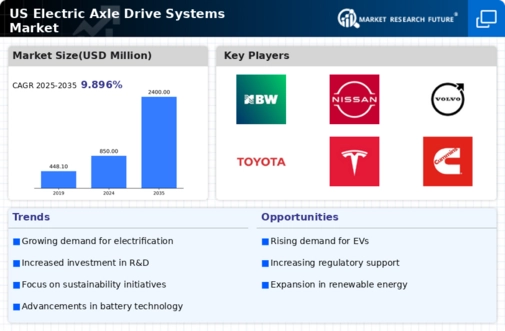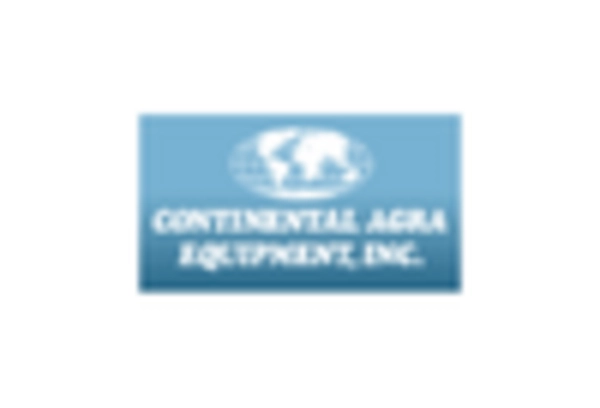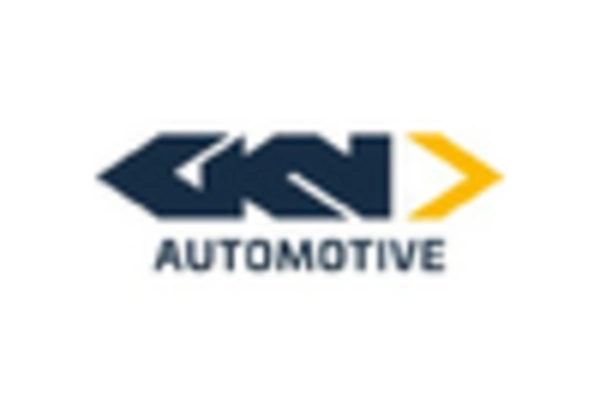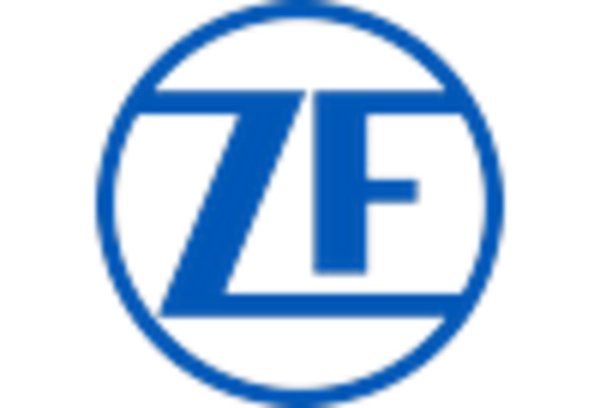Growing Electric Vehicle Adoption
The increasing adoption of electric vehicles (EVs) in the US is a primary driver for the electric axle-drive-systems market. As consumers and manufacturers shift towards EVs, the demand for efficient and reliable electric axle-drive systems rises. In 2025, it is estimated that EV sales will account for approximately 25% of total vehicle sales in the US, reflecting a significant shift in consumer preferences. This transition is further supported by various state incentives and federal policies aimed at reducing carbon emissions. Consequently, the electric axle-drive-systems market is poised to benefit from this growing trend, as manufacturers seek to enhance vehicle performance and efficiency through advanced electric drive technologies.
Environmental Regulations and Standards
Stringent environmental regulations in the US are driving the electric axle-drive-systems market. The government has implemented various standards aimed at reducing greenhouse gas emissions and promoting cleaner transportation options. For example, the Corporate Average Fuel Economy (CAFE) standards require automakers to improve the fuel efficiency of their fleets, which indirectly encourages the adoption of electric drive systems. As manufacturers strive to comply with these regulations, the demand for electric axle-drive systems is likely to increase, as they offer a viable solution for meeting these stringent requirements while enhancing vehicle performance.
Rising Fuel Prices and Economic Factors
Rising fuel prices and economic factors are influencing consumer behavior and driving the electric axle-drive-systems market. As gasoline prices fluctuate, consumers are increasingly seeking alternatives to traditional internal combustion engine vehicles. The total cost of ownership for electric vehicles, which includes lower fuel and maintenance costs, becomes more attractive in this context. In 2025, it is anticipated that the total cost of ownership for electric vehicles will be significantly lower than that of gasoline-powered vehicles, further incentivizing consumers to make the switch. This shift in consumer preference is likely to bolster the demand for electric axle-drive systems, as manufacturers respond to the changing market dynamics.
Investment in Infrastructure Development
Investment in charging infrastructure is crucial for the growth of the electric axle-drive-systems market. The US government and private sector are increasingly allocating funds to expand the EV charging network, which is essential for supporting the rising number of electric vehicles on the road. By 2025, it is projected that the number of public charging stations will increase by over 50%, facilitating greater consumer confidence in EV adoption. This infrastructure development not only enhances the usability of electric vehicles but also drives demand for electric axle-drive systems, as manufacturers aim to produce vehicles that are compatible with the expanding charging network.
Technological Innovations in Electric Drive Systems
Technological innovations play a pivotal role in shaping the electric axle-drive-systems market. Advancements in battery technology, power electronics, and motor design are leading to more efficient and compact electric drive systems. For instance, the introduction of solid-state batteries is expected to improve energy density and reduce charging times significantly. As these technologies mature, they are likely to enhance the performance of electric axle-drive systems, making them more appealing to manufacturers and consumers alike. The electric axle-drive-systems market is thus positioned to benefit from these innovations, as they contribute to the overall efficiency and effectiveness of electric vehicles.

















Leave a Comment